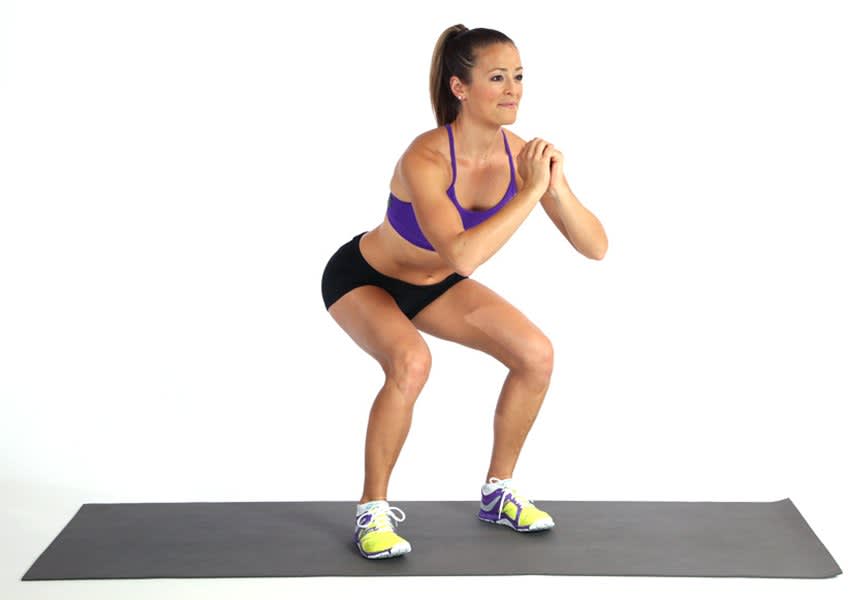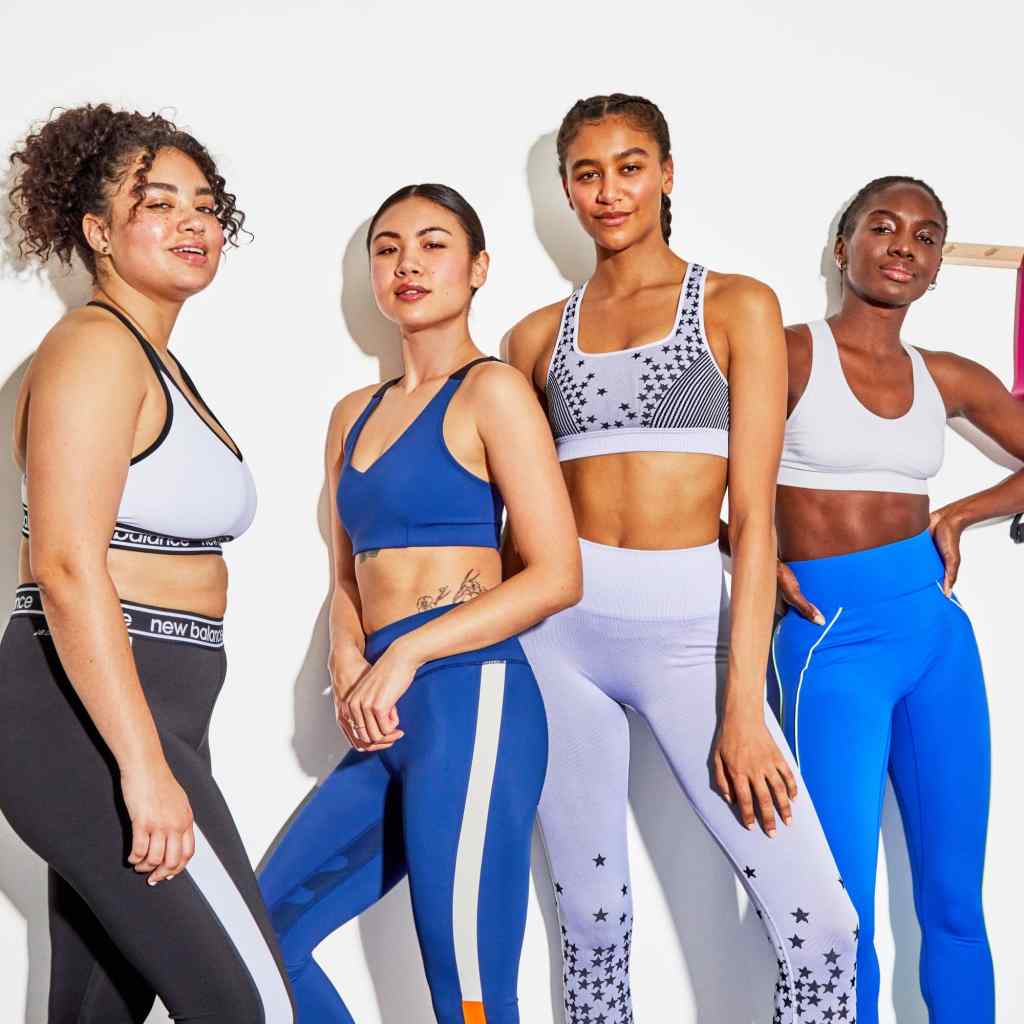Starting anything new can be both exciting and confusing, especially when it comes to fitness. If you’ve just gotten into strength training and have no idea where to begin, we’ve got you covered. Before you start doing more intense movements like box jumps and burpees, you’ve got to learn the basic movement patterns, like both the upper-body push and pull and the hip hinge. To help you get started, we asked certified trainers to share exercises they think every beginner should know in order to prevent injury, to move better, and to get stronger. Here’s what they said:
Related: This Full-Body HIIT Workout Requires Zero Equipment, and It Only Takes 12 Minutes to Do

Bodyweight Squat
“The bodyweight squat is one of the most functional exercises we as humans can perform because it promotes full hip range of motion and helps to strengthen our largest muscle group: the glutes,” Jared Aguilar, PT, DPT, a physical therapist and fitness coach at Reach Outcomes, told POPSUGAR. He also explained that squats help strengthen the hamstrings, quadriceps, abdominals, and the lower-back muscles.
- Stand up straight with your head facing forward. Pick a spot at eye level to focus on.
- Place your feet slightly wider than shoulder-width apart.
- Push your chest up and outward and hold your hands straight out in front of you, palms facing down.
- Begin the exercise by lowering your glutes down like you’re going to sit on a chair or bench.
- Continue down until your thighs are parallel to the ground. Your weight should be in your heels.
- Finish the move by pushing up through your heels and rising back to the standing, or starting, position.
Glute Bridge
“I recommend the glute bridge because it’s great for learning how to utilize your glutes, it can help people become familiar with the hip hinge pattern seen in movements like deadlifts, and it’s great for stabilizing the hips, which is essential to improve movement and prevent things like back pain and more severe back injuries,” Tamara Pridgett, a NASM-certified trainer. When performing this move, make sure to move intentionally to avoid an excessive arch of the spine.
- On your mat, lie on your back with your knees bent and feet flat on the floor. Be sure to keep your feet underneath your knees, not in front. Plant your palms by each side, facing down.
- Press through your heels to raise your hips up to the ceiling, tensing your abs and squeezing your butt as you do. You should be making a long diagonal line with your body, from shoulders to knees.
- Hold for a few seconds, making sure your spine doesn’t round and your hips don’t sag. Keep your abs and butt muscles engaged.
- Lower down to the ground; this is considered one rep.
Side Plank
“Planks are great for your core as well as your arms,” Adeeb Khalfe, PT, DPT, CSCS, founder and owner of Movement Evolution, told POPSUGAR. No matter the variation, make sure you keep your core engaged the entire time, he said. Khalfe likes the side plank in particular because it help with lower-back pain.
- Balance on your right hand and the outside edge of your right foot, with your body in one straight line. To modify, stagger your feet and bring your top leg forward.
- Hold for 30 seconds on each side.
Basic Push-Up
The push-up is another exercise Khalfe recommends beginners learn. “The push-up should be done without the elbow flaring out too much and can be modified by first attempting them against a wall, then on the floor with your knees on the ground, then progressing into your normal push-up position,” he said. Be sure to keep your body in a straight line, avoiding any arching or rounding of the spine.
- Start in a plank position with your arms and legs straight, shoulders above your wrists.
- Take a breath in, and as you exhale, bend your elbows out to the sides and lower your chest toward the ground. Stop as soon as your shoulders are in line with your elbows. Inhale to straighten your arms. This counts as one rep.
- If this is too difficult, do this exercise with your knees on the floor.
Forearm Plank
“The plank is a foundational exercise. This is a great bodyweight exercise to master prior to strengthening your back muscles with added resistance,” Aguilar said. He recommends learning how to perform the forearm plank variation and said to make sure that your hips don’t lift up, creating a “V” shape.
- Start face down on the floor resting on your forearms and knees.
- Push off the floor, raising up off your knees onto your toes and resting mainly on your elbows.
- Contract your abdominals to keep yourself up and prevent your booty from sticking up.
- Keep your back flat – don’t let it droop or you’ll be defeating the purpose. Picture your body as a long, straight board or plank.
Split Lunge
Holly Rilinger, a NASM-certified trainer, said one of the most basic movements everyone should know is the knee-dominant bodyweight lunge. “Once you have perfected that movement pattern, start to add weights,” she said.
- Stand with the feet hip-distance apart.
- Keep your upper body straight, core engaged, with your shoulders relaxed, and your chin up.
- Step forward with your right leg, lowering your hips until both knees are bent at about a 90-degree angle. Make sure your front knee is directly above your ankle, and your other knee gently lowers softly to the floor.
- Activate your inner thighs by squeezing your legs toward each other, and keep the weight in your front heel as you push back up to standing, keeping your right foot in place so you can lower back down.

